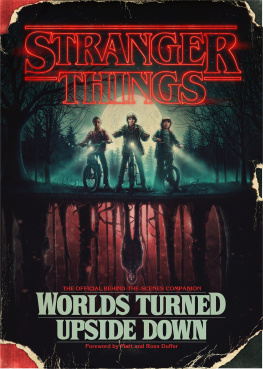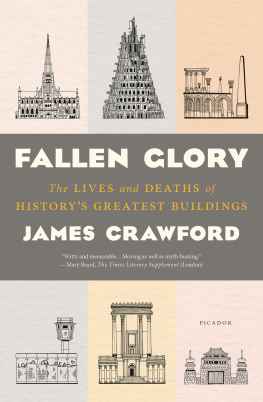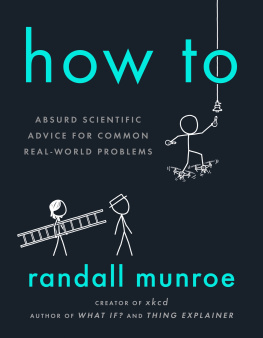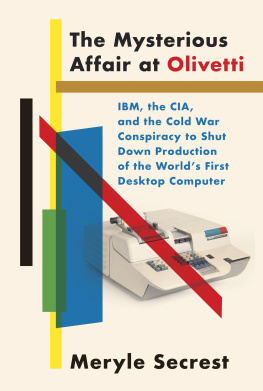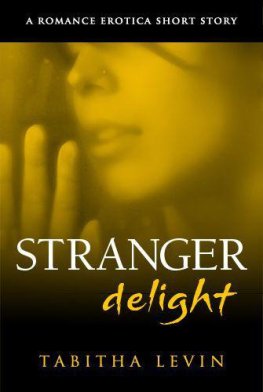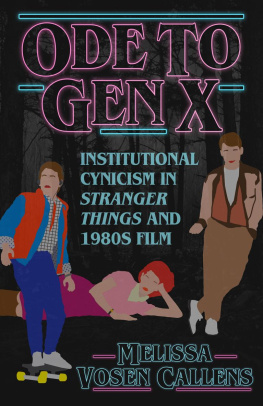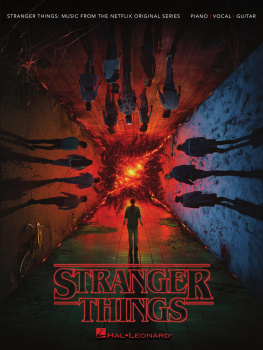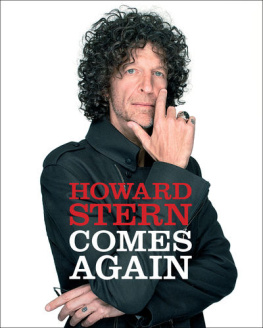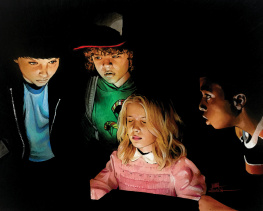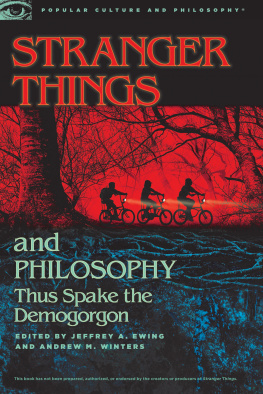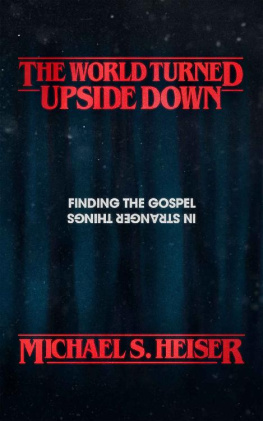Copyright 2018 N ETFLIX , I NC . A LL RIGHTS R ESERVED .
Published in the United States by Del Rey, an imprint of Random House, a division of Penguin Random House LLC, New York.
D EL R EY and the D EL R EY colophon are registered trademarks of Penguin Random House LLC.
Photo credits, which constitute an extension of this copyright page, appear on .
This book was produced by Melcher Media, Inc.
FOREWORD
D O YOU copy? This book is for nerds. Repeat. This book is for nerds.
So if youre reading this right now, congratulationsyoure a nerd! Watching our nerdy show apparently wasnt enough for you. You wantedscratch that, needed to know how it was made, which is the kind of thought process we love. And its why we, as fellow nerds, were so excited when we were told about this making-of book!
When we were kids, one of our favorite Christmas presents was an oversized, glossy hardcover book called Industrial Light & Magic: Into the Digital Realm . It detailed the history of ILMs visual effects with pages and pages of incredible behind-the-scenes photographs featuring Star Wars models, CG Jurassic Park dinosaurs, and Ghostbusters puppets, and, well, pretty much everything cool. Keep in mind that this was back in the dark ages of 1996, when the internet moved at the speed of a snail and DVDs didnt yet exist, meaning it was a lot harder to figure out how movies were made. So for movie fanatics like us, this book offered a very rare glimpse behind the curtain of our favorite films, showing in great detail how this company pulled off what we consider to be the greatest magic tricks of our time. Perhaps what surprised us most was the sheer number of artists it took to create these images, to tell these stories.
This was something of an epiphany for us; before this book, we thought that everything sprung from the mind of the director, an auteur. But this was simply not true; it was, in fact, impossible. And the more we studied the art of visual storytelling, the more we began to understand it as a collaborative medium. In particular, the types of stories we lovewhich so often tend toward the fantasticalcannot be produced by a single artist. They in fact require an army of artists . And the same has certainly held true of Stranger Things .
We came up with the initial idea for Stranger Things in the fall of 2013. So you could say it all began with just us, but that would be disingenuous, as our story was inspired by the work of so many artists before us, most notably Steven Spielberg and Stephen King. We werent collaborating with them in the traditional sense, but it felt like we were very much in conversation with them. We like to think they, too, had been in conversation with the artists who had come before them.
After writing our pilot script, we began a more traditional collaboration, joining forces with two incredible producersShawn Levy (a mentor as well as producer and director on the show) and Dan Cohen (who was the first stranger to believe in the potential of this crazy idea). Shawn and Dan gave our script some clout, and, after a week of rejections, the script somewhat accidentally found its way to Netflix. They bought the project the following day.
Once Netflix was on board, the team grew quickly and dramatically, with more artists joining every day. Before we knew it, over a hundred artists had joined. These artists came from almost every imaginable creative fieldthey were actors, writers, editors, production designers, cinematographers, costume designers, hair designers, colorists, visual effects artists, painters, musicians, and so much more. Through collaboration among so many artists from such varied disciplines, the show naturally began to evolve, becoming something differentand far greaterthan what we had envisioned initially. This was no longer just our vision; it was a collective vision.
Take our favorite scene from season one: Eleven confronts the Demogorgon in Mr. Clarkes classroom. You have Kimberly Adamss costume for Eleven: a pink prairie dress, high socks, and sneakers, a look which was mimicked by countless children on Halloween. You have Tim Ivess flickering lights, staggered to allow for darkness and clarity. You have Kyle Dixon and Michael Steins synth score, which played the scene for emotion rather than horror. You have Chris Trujillos and Jess Royals beautifully designed classroom, where even the smallest detail had been carefully considered. You have the Demogorgon design by Aaron Sims, masterfully animated to convey a human-like fear and vulnerability. And, of course, you have the performances: Millie Bobby Brown, conveying a world of feeling with just her eyes, and Finn Wolfhard, shedding a single tear as he watches his first love vanish into thin air. And that is just a small list of the artists responsible for bringing that scene to your screen.
This kind of intensive collaboration took place on every single scene in the show. It is, of course, easy now to say that all of these decisions were well thought out and perfectly coordinated, but the truth is that we were all just sort of figuring it out as we went; no one was totally sure what finished form the show would ultimately take. We just all thought it was... cool . But how would it all work together? What... was it exactly? The answer to that question came slowly. It took so long to finish the show, for all the pieces to lock into place, that we barely realized it happened. But, eventually, it did: a distinct and cohesive shape formeda look, tone, pace, and feel that reflected the spirit of everyone who touched it along the way. It became the show you now know. It became Stranger Things .
Stranger Things was finally released to the world in July of 2016. We were all proud of the finished product, but we were all so close to it that we didnt have any idea how or even if it would resonate with anyone outside of our Stranger family. Some of us were cautiously optimistic; others... less so. The brilliant David Harbour, who lives in New York, saw no subway ads and therefore became convinced the show was bound for failure. He buzzed his hair, holed up in his apartment, and stayed off the internet.
We were similarly convinced of looming failure, but after some prodding from our friends, we tiptoed onto Twitter. What we found shocked us; not only did people seem to like the show, many had already finished it! Feeling emboldened, we continued to track the social media response for the next several weeks, reading what the fans had responded to, what they didnt respond to, oohing and aahing over the amazing fan art, analyzing their theories, and, of course, watching in shock as the rally for Barbs justice continues to grow in fervor and size.
Were not sure at exactly what point we allowed ourselves to believe that the show was more than a niche successthough it may very well have been a giant mural of Barb in Melbournebut we have never felt such relief, or such gratitude, in our lives. It turned out we had a surprising new companion on this journey with us: the fans . For us, it was a dream come true.
So this book is for you, for joining us on this journey and continuing to inspire us; its for all of the incredible artists who have worked so hard and so passionately to bring this story to life; and, perhaps above all, its for anyone who dreams for a living or dreams of dreaming for a living. Because this world needs more storytellers. It needs more dreamers. And yes, it needs more nerds .

